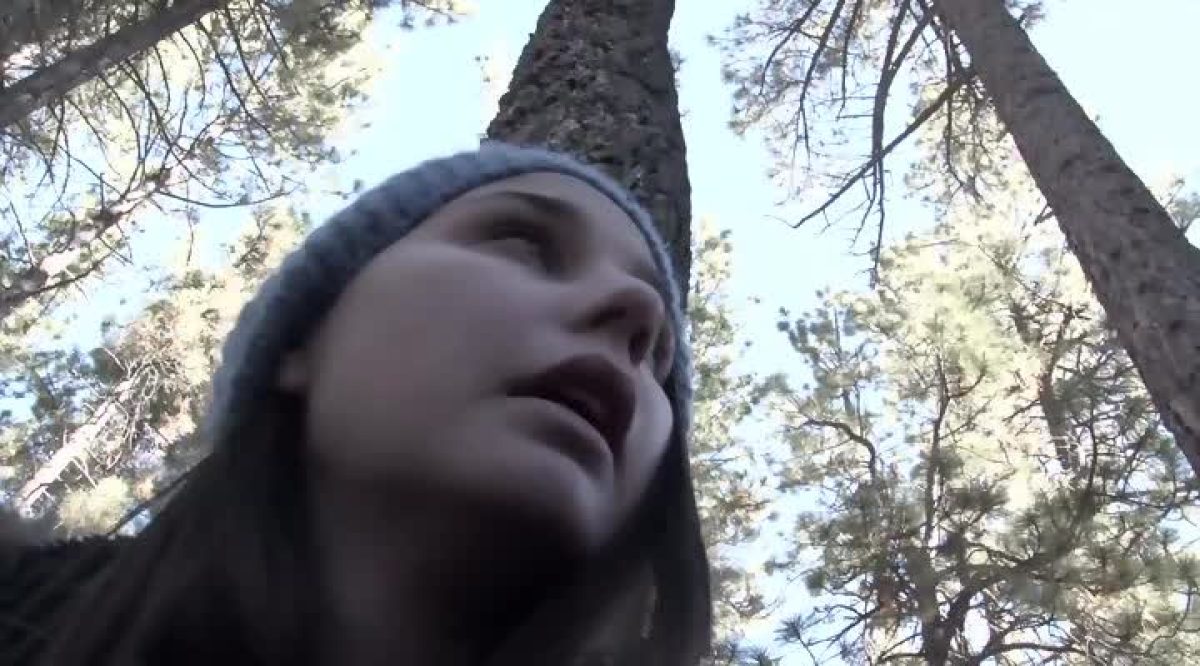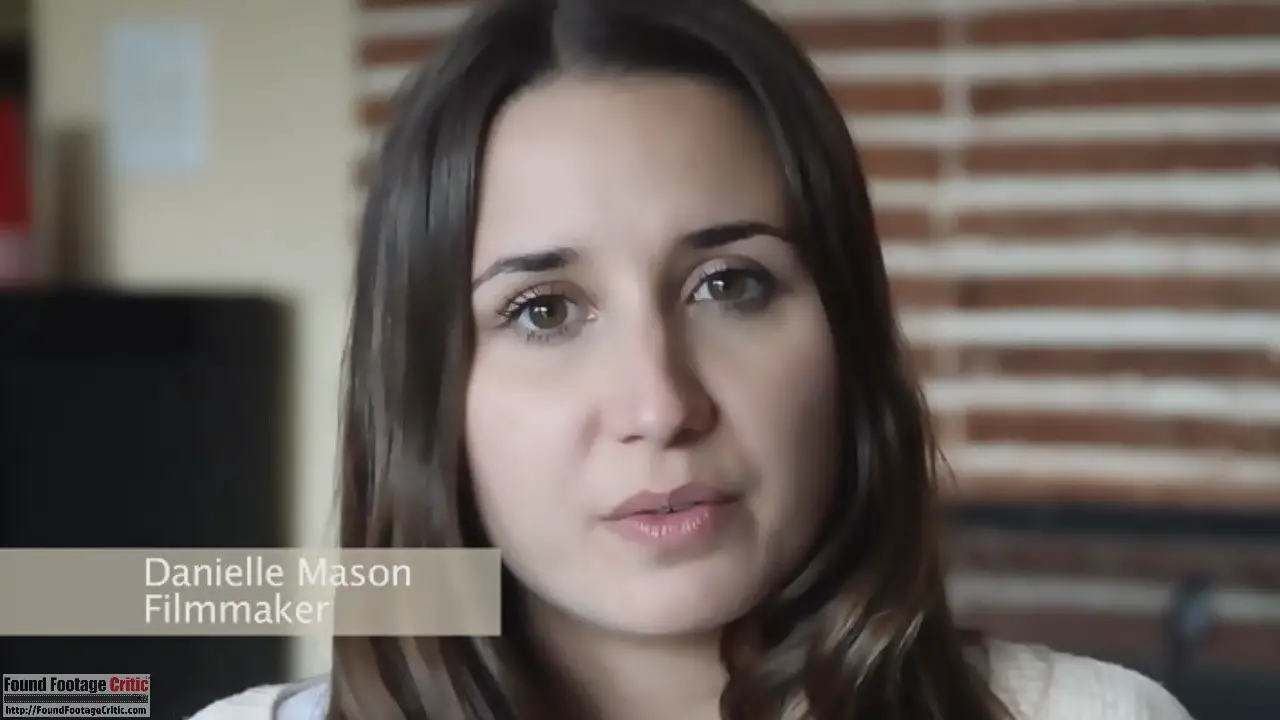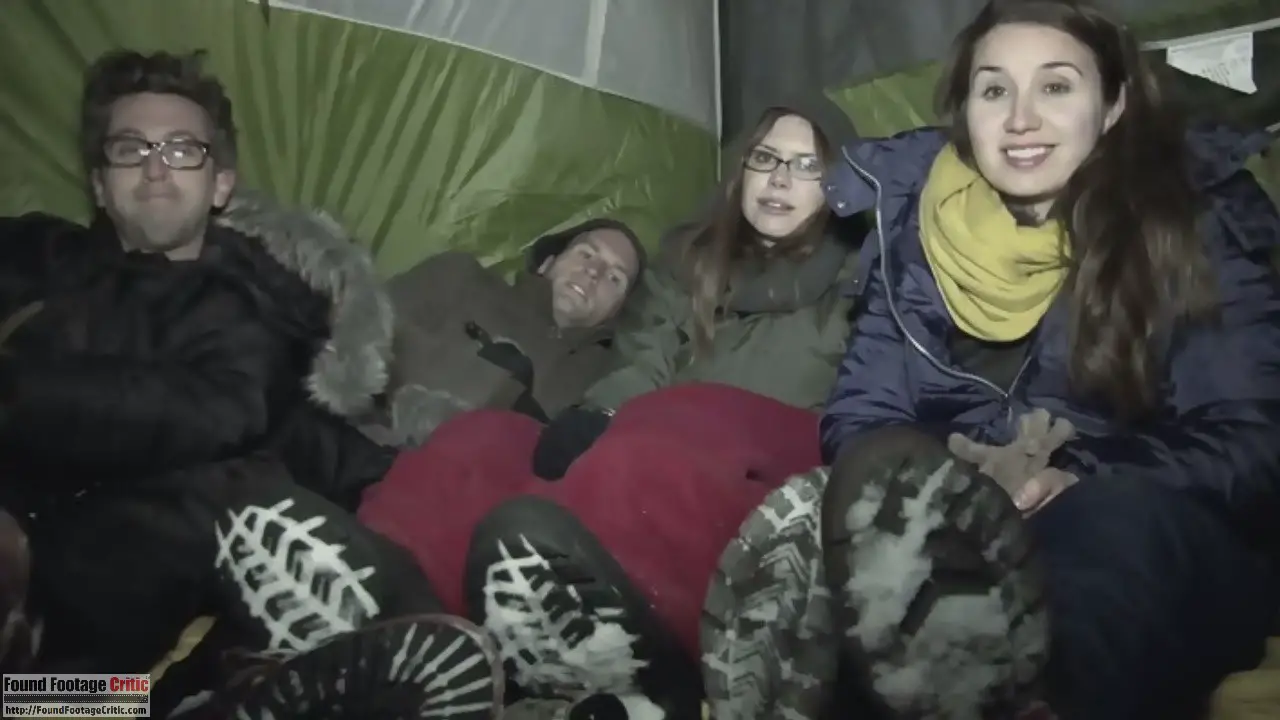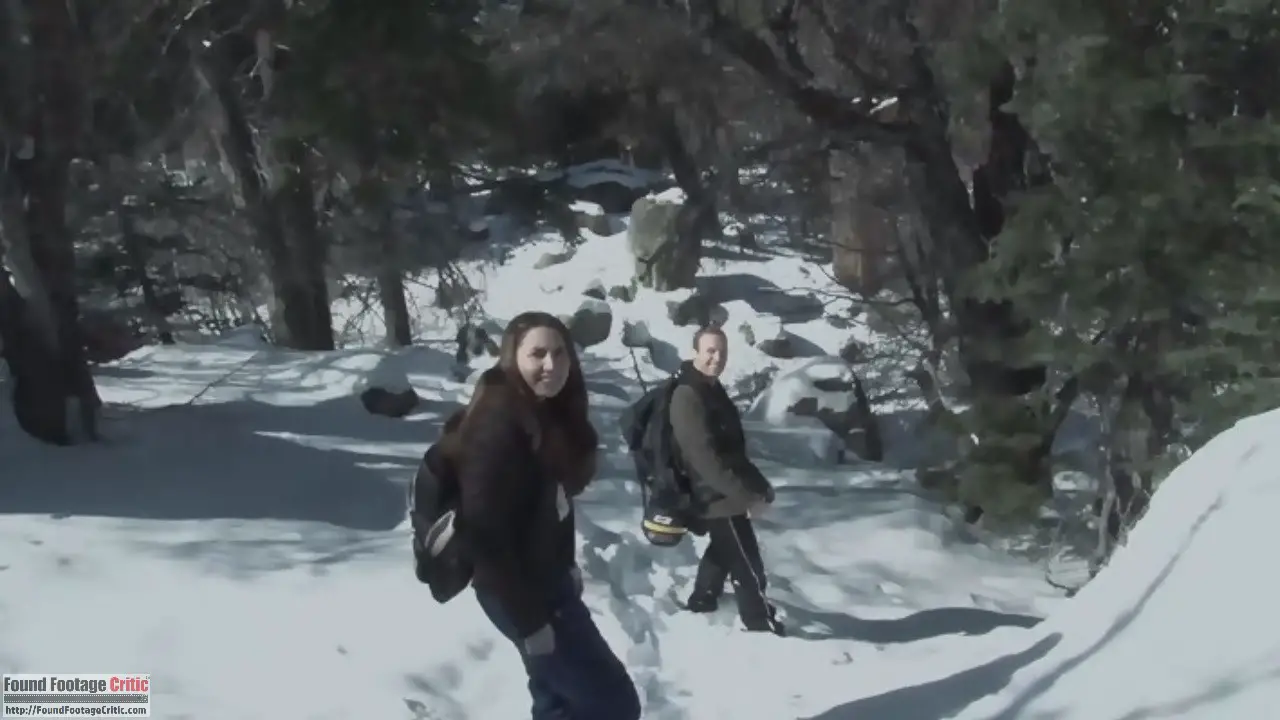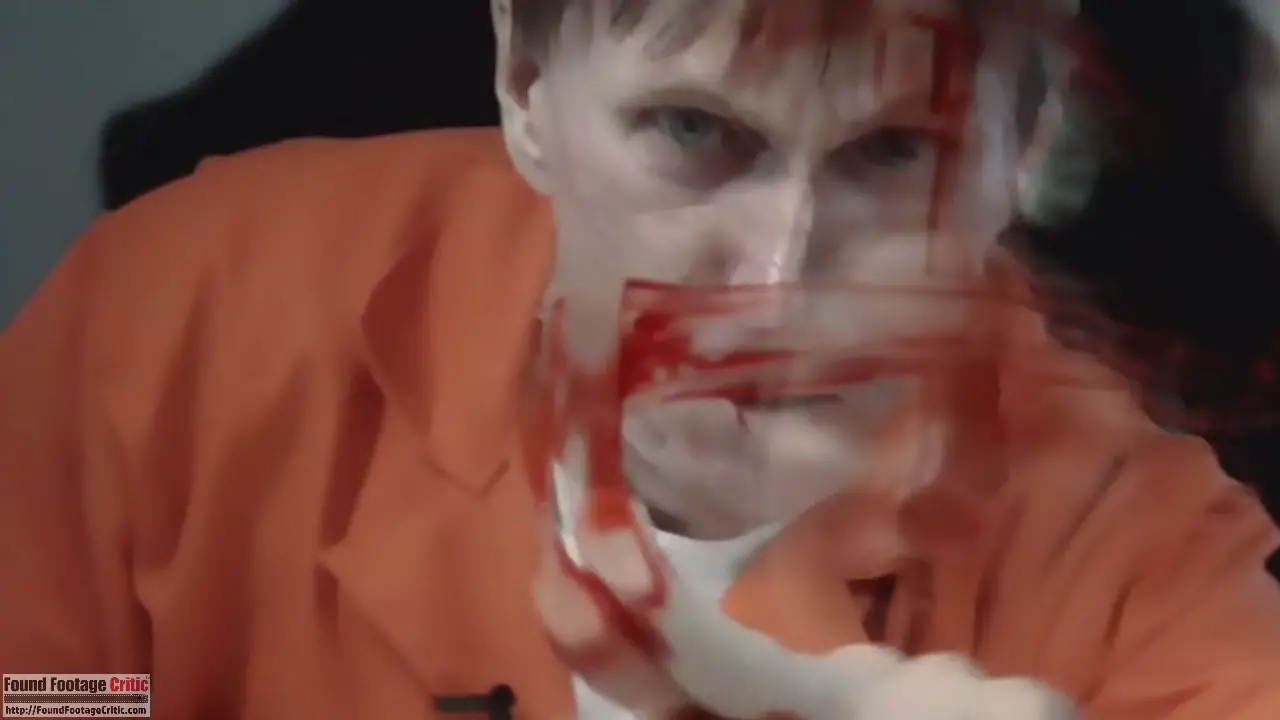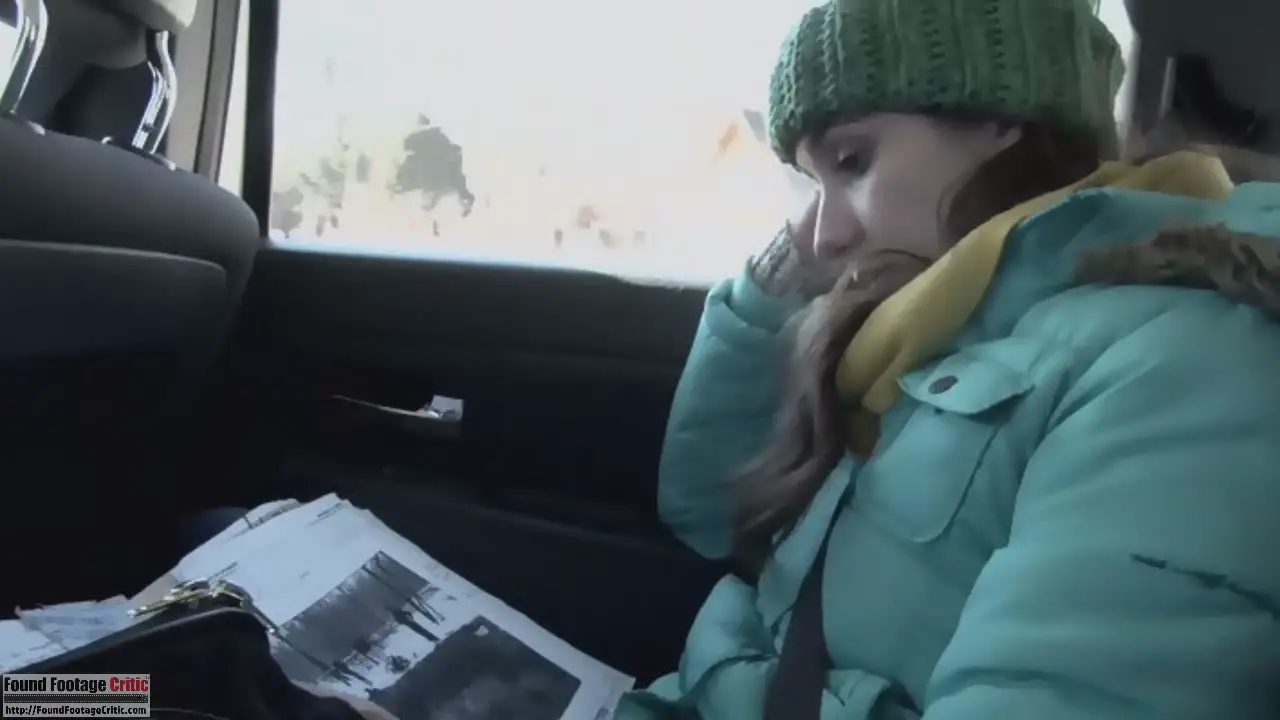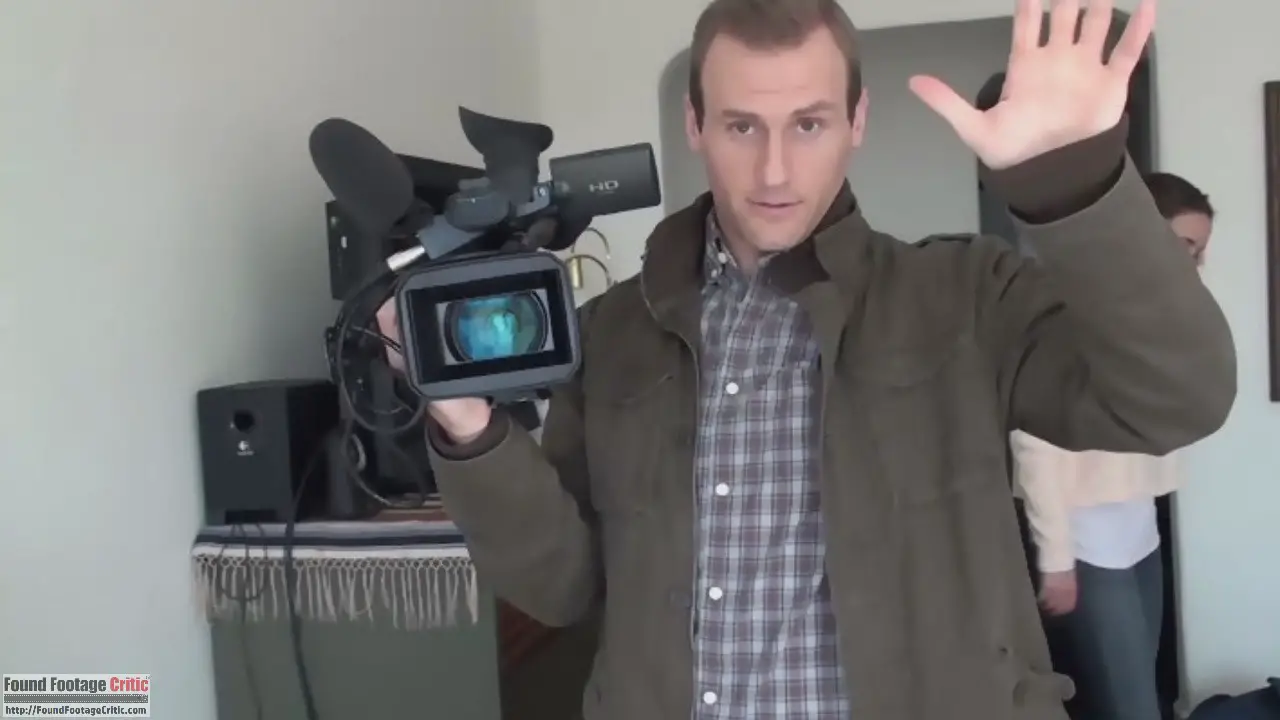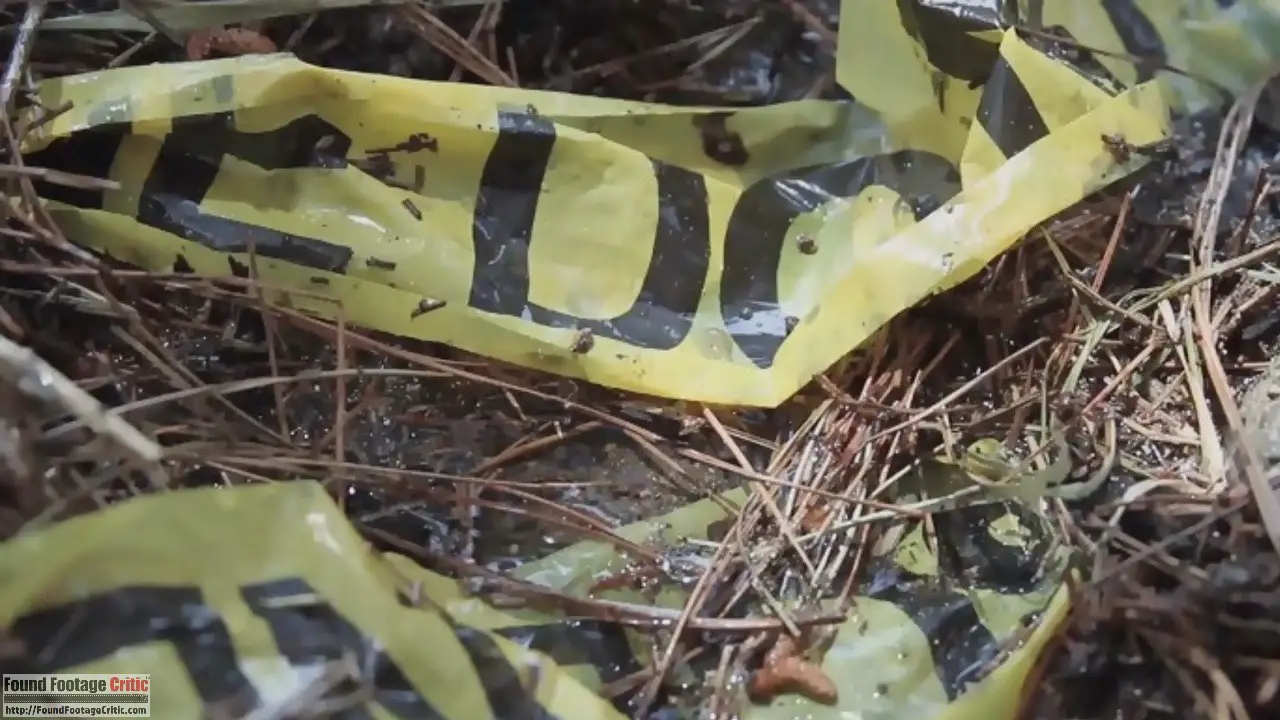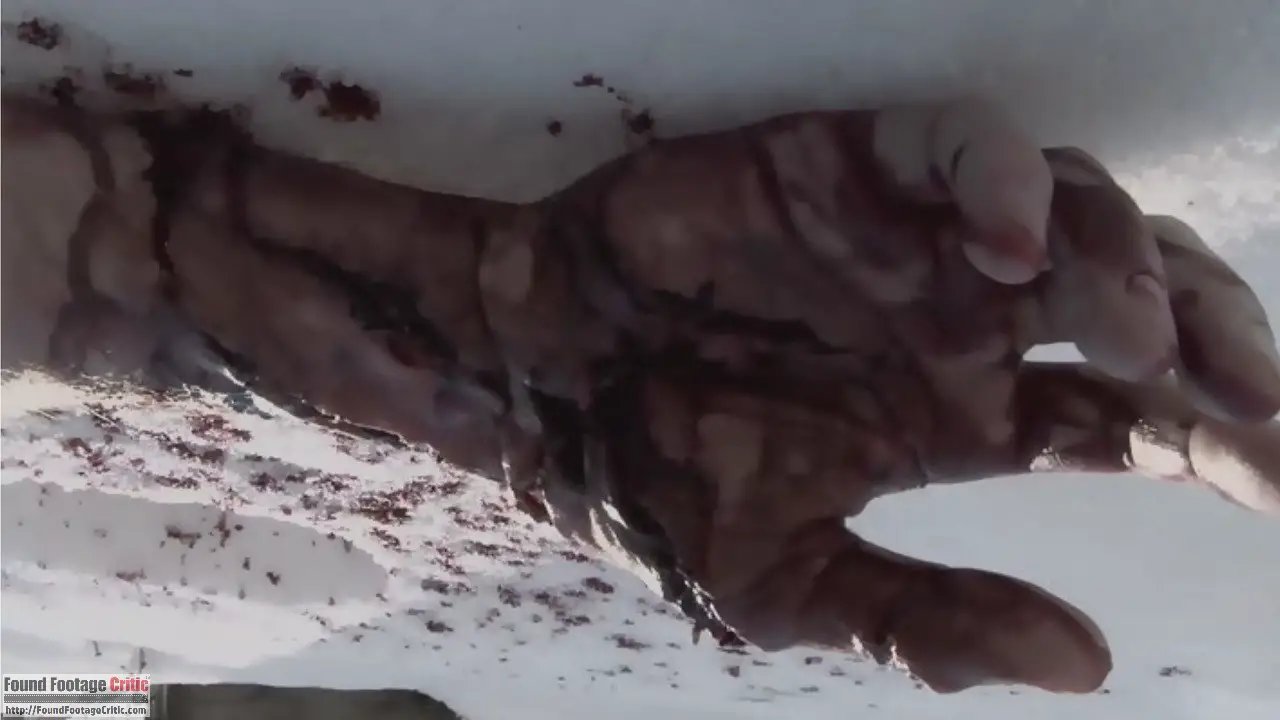“The Black Water Vampire” is a found footage horror film written and directed by Evan Tramel. The movie is presented as recovered footage from a missing documentary crew that sets out to investigate a series of infamous murders and local vampire legend in the fictitious town of Fawnskin.
The Black Water Vampire opens with aged police footage of a murder investigation. The body of a young woman is recovered with a large bite mark on her throat and a symbol scribed on her leg. The film later reveals that this is the last of four murders that took place over a forty year period. Each murder took place exactly ten years apart on December 17th, the night of the winter solstice.
From here, The Black Water Vampire transitions to the found footage captured by a documentary crew led by Danielle Mason (Danielle Lozeau), the lead investigator. Accompanied by Danielle is her producer Andrea (Andrea Monier), cinematographer Anthony (Anthony Fanelli), and sound mixer Rob (Robin Steffen).
What horrors will Danielle and her film crew find in the dark recesses of the Black Water Woods?
The intrepid group pack their film gear and camping supplies for the drive to the town of Fawnskin where the murders took place. Consequently, this is the same small town in which Danielle was raised. Based on her initial investigation and review of the evidence surrounding the case, Danielle is convinced that the man incarcerated for the crimes, Raymond Banks (Bill Oberst Jr.) was wrongfully accused. With only three months remaining before Raymond Banks’ death sentence is carried out, Danielle has little time to prove his innocence and uncover the truth.
Shortly after arriving in town, the film crew interviews the townsfolk who have mixed opinions on Raymond Banks’ innocence—many people believe he is guilty as charged, while others believe the murderer is still at large. Further, there are quite a few residents who assert the four deaths were not murders at all, but rather the work of the legendary “Black Water Vampire” that is said to inhabit the Black Water Woods.
Next Danielle interviews Raymond Banks at the local penitentiary. Raymond Bank is visibly disturbed and mentally unstable, believing a government conspiracy is responsible for framing him for crimes he did not commit.
For the final stage of their investigation, the film crew heads out into the Black Water Woods to visit the crime scene of the last murder. With the next ten-year winter solstice only a few days away, what horrors will Danielle and her film crew find in the dark recesses of the Black Water Woods?
Found Footage Cinematography
The found footage cinematography used throughout The Black Water Vampire is well done. Anthony, who captures most of the footage, is a professional cinematographer and uses professional grade equipment to shoot. As such, the relatively good framing, great lighting, and choreographed shots in the woods are easily explained. The film crew also uses a consumer handheld video camera with night vision. This second camera often provides a second vantage point during scenes that warrant a second view or when the characters are separated. The night vision is used sparingly, and to the film’s credit, is only used when needed by the characters.
The creature effects are primarily practical and exceptionally done.
The sound is also very well done in The Black Water Vampire. As expected during outdoor filming, the volume of the characters’ dialog appropriately increases and decreases as they move away from or towards the video camera. Rob is a professional sound mixer and operates a boom during fixed location scenes where Danielle is narrating to the camera. The film’s use of characters that are supposed to be professional filmmakers goes a long way towards justifying the higher-quality footage and inclusion of choreographed scenes.
The indoor fixed camera interview portions of the film are also well done, providing the obligatory names and titles of the main protagonists in the movie. The Black Water Vampire also contains well-constructed montage scenes of still photos and newspaper clippings of the prior murders, accompanied by a voiceover narrative by Danielle. True to form, the documentary portions of the film contain intermittent background music, which is justified and expected. While most of the found footage is untainted with non-diegetic music and sound, there are a few scenes with subtle sound design to increase the perceived tension—a trope this film could have done without.
The film opens with archival police footage shot in 4:3 aspect ratio, contrasted by the 16:9 (widescreen) aspect ratio of the rest of the film shot using HD video cameras. The police footage in this opening scene looks appropriately aged and of a lower resolution commensurate with older technology.
The Black Water Vampire also contains its fair share of practical and CGI effects. The film effectively uses blood splatters in the snow to tease that something bad took place without actually showing the end-results—which is something that often happens in real life. The inclusion of a convincingly real marred hand during a latter scene in the film helps illustrate the dangers faced by the characters.
The creature effects are primarily practical and exceptionally done. Of note is the use of CGI overlaid on the creature practicals to enhance their visual impact. This hybrid approach is best as effects based in reality most always look better than pure CGI.
Filming Reason
The filming reason is a measure of how well a found footage movie justifies why the characters filmed a feature lengths worth of footage. In The Black Water Vampire, the filming reasons used throughout the film are generally good. First and foremost, Danielle hires a group of filmmakers to produce a documentary covering the Black Water Murders, justifying the filming of the interviews, montage, and most of the found footage captured by Danielle’s documentary crew.
While the filming reasons are good, The Black Water Vampire contains several scenes that challenge the found footage conceit of the film. In the latter part of the movie, one of the characters is injured and unable to walk without assistance and the characters need to find their way out of the woods to find help before nightfall. During these scenes, Anthony implausibly films choreographed shots of one character helping the second character hobble through the thick snow. At this point in the film, the characters are knowingly in danger and need to find help. The characters should have been working together to escape their predicament as quickly as possible rather than pausing to film choreographed scenes.
The Black Water Vampire contains night scenes where the characters are in danger. In these instances the video camera is used as a light source with daytime and night vision, justifying why the video cameras were filming during these tense moments. Finally, the archival police footage presented at the beginning of the film is police evidence, and its existence goes without question.
Found Footage Purity
The found footage purity measures how well a film maintains the illusion of actual found footage. This rating criterion is heavily influenced by the found footage cinematography, filming reason, and additional factors. In The Black Water Vampire, the found footage purity is good, but not without some challenges. As mentioned earlier, the subtle use of sound design during the found footage portions of the film and decision to continue filming composed scenes during life threatening circumstances negatively impacts the overall found footage conceit of The Black Water Vampire.
Another question raised by the film is how the footage came to be edited in the first place. Considering the fate of the characters, who edited the raw footage that makes up the final feature film? Since Danielle has been investigating The Black Woods Murders for some time before venturing out into the woods, we can assume that much of the preliminary footage and montage scenes were already completed. Only the found footage scenes remained for editing. The film also includes footage towards the climactic ending with a questionable origin that cannot be discussed without venturing into spoiler territory, for this reason, these scenes are not broached in this review.
Acting
While The Black Water Vampire is a technically strong film, the acting early-on is fraught with challenges, particularly the townsfolk interviews and supporting roles, which unfortunately come across as ingenuine and contrived. The film slowly compensates for this somewhat weak supporting roles through its compelling story and makes up most of the difference by the finale.
The main cast is effective, although their characters are never fully fleshed out. This lack of depth may make it difficult for viewers to relate to or care about the welfare of the protagonists. Danielle Lozeau as character Danielle is the defacto leader of the film crew and does a good job conveying her obsession over what she believes is the wrongful incarceration of the accused, Raymond Banks. Anthony Fanelli as character Anthony plays the professional cinematographer hired to perform a job. When the very survival of the film crew is called into question and Danielle starts making questionable decisions, Anthony’s devotion to the job comes in a distant second to his own welfare. Robin Steffen as sound mixer Rob plays a man who is afraid of his own shadow. While Robin Steffen’s acting was good, his character’s dialog and decisions throughout the film are often a stretch from reality. Andrea Monier as producer Andrea performs admirably in her role, unfortunately, her character is not fully fleshed out.
A pleasant surprise in The Black Water Vampire is Bill Oberst Jr. as convicted murderer Raymond Banks. Bill Oberst Jr. excelled as the lead in Children of Sorrow (2012), and while his part in The Black Water Vampire is small, he performs wonderfully.
Plot
The Black Water Vampire is a slow burn. The early scenes where the townsfolk and other members of the community are interviewed about their thoughts on the Black Water Murders are a lost opportunity for what should have been some of the more interesting and entertaining moments in the film. Unfortunately, these scenes do not play out as good as they could have. Nonetheless, these scenes effectively foreshadow what is in store for the unwitting group of filmmakers.
The practical effects are strong enough to show front and center, something director Evan Tramel knew and used to his advantage.
The interview of Raymond Banks (Bill Oberst Jr.) offers a foreboding glimpse into the psyche of someone who is clearly mentally unhinged. Despite his psychosis, Danielle is convinced that Raymond Banks was unfairly accused of having committed the Black Water Murders.
The pace picks up in the second act of The Black Water Vampire when the protagonists venture out into the Black Water Woods to investigate the original crime scene. The outdoor camping scenes are highly reminiscent of The Blair Witch Project (1999) right down to the obscure noises and ruffling of the tent fabric. Camping scenes aside, observant viewers are likely to notice that The Black Water Vampire also includes an array of additional plot elements and minutiae borrowed from The Blair Witch Project (1999). Despite these similarities, the film does tease out a healthy dose of fear and some good jump scares to match—particularly due to the practical creature effects and overlaid CGI.
The practical effects are strong enough to show front and center, something director Evan Tramel knew and used to his advantage. The Black Water Vampire is among only a handful of found footage films with creature effects realistic enough to show in full view of the camera, not just once, but several times.
The ending of The Black Water Vampire is truly unique and a stark contrast from the early trajectory of the film. We refrain from delving too deep into the ending to avoid spoilers. All that can be safely said is that the ending is infused with dark humor and a retro approach reminiscent of a horror film harkening back to the 1980s.
Additional Resources
- The Black Water Vampire (2014) – Movie Trailer
- The Black Water Vampire (2014) – Podcast Review – Coming Soon

